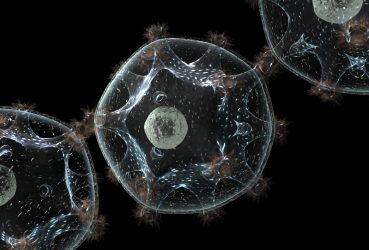During the last century, basic studies in virology have focused on developing a molecular mechanistic understanding of how infectious viruses reproduce in their living host cells. However, over the last ten years the advent of deep sequencing and other powerful technologies has revealed in natural and patient infections that viruses do not act alone. Instead, viruses are often accompanied by defective virus-like particles that carry large deletions in their genomes and fail to replicate on their own. Co-infections of viable and defective viruses — when both manage to get into the same cell — behave in unpredictable ways, but often interfere with normal virus growth, potentially enabling infections to evade host immune surveillance.
In a study from Systems Biology researchers Fulya Akpinar, Andrea Timm, and John Yin, controlled levels of defective viruses were co-infected with viable viruses engineered to express a fluorescent reporter protein during infection. Unique profiles of reporter expression acquired from thousands of co-infected cells revealed how interference acts at multiple stages of infection. Many viruses, including influenza, dengue and West Nile, appear to spread as co-infections of viable and defective viruses, so the study has implications for developing potential anti-viral strategies against these and other viruses.
The full paper is published in the current issue of the Journal of Virology.

